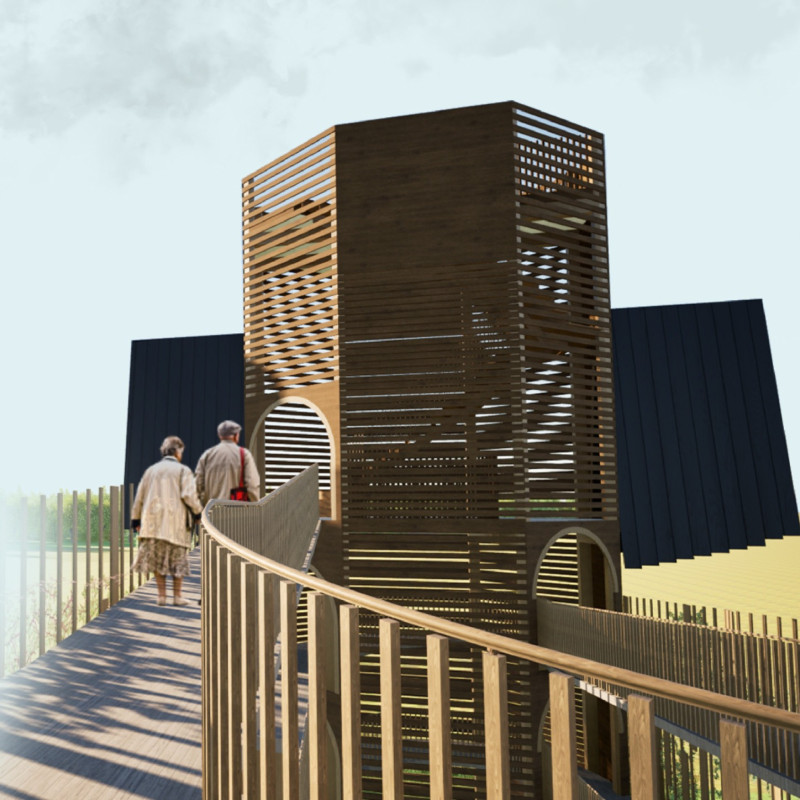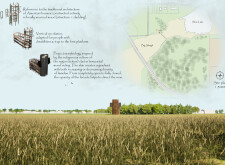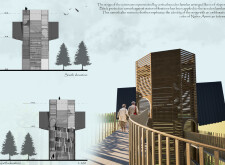5 key facts about this project
**Overview**
Located near Big Slough and adjacent to Silver Lake along Highway 14, the tower is designed to connect with both the natural environment and the cultural heritage of the indigenous peoples of the region. Its conceptual foundation is rooted in sceno-graphy, emphasizing how the structure's appearance and user experience shift based on perspective, time, and ecological context. From a distance, it presents as a cohesive form, while closer inspection reveals intricate architectural details that respond to seasonal variations.
**Morphology and Materiality**
The tower's design is informed by indigenous architectural motifs, incorporating traditional forms that align with contemporary functions. The facade features horizontal wooden slats, or lamelas, that create a visual dialogue reminiscent of indigenous totem poles. Locally sourced wood serves as the primary material for both the structure and cladding, reinforcing a commitment to sustainability. A black protective varnish is applied to the lamelas, offering moisture resistance while echoing the rich colors found in Native American art. This careful gradation of transparency allows for dynamic light play and varying degrees of openness, directing views to the natural landscape as users navigate the space.
**User Experience and Accessibility**
A significant focus of the design is on inclusivity, particularly in the vertical circulation system, which accommodates individuals with disabilities and provides access to an observation platform. The tower features two viewing platforms that spiral around a central core, offering expansive vistas and fostering an immersive visitor experience. The design facilitates a journey through the structure, with the facade transitioning from solid to more open as one ascends. This layered approach enhances both function and aesthetics, adapting to the shifting perspectives of visitors.
Furthermore, the integration of local flora throughout the design promotes a stronger connection to the environment. Vegetation, including flowering vines and native trees, is strategically positioned to evolve and enhance the structure's interaction with the seasons. By embedding the tower within its forested context, the architecture invites contemplation and engagement with the surrounding landscape, creating a meditative experience that changes over time.






















































